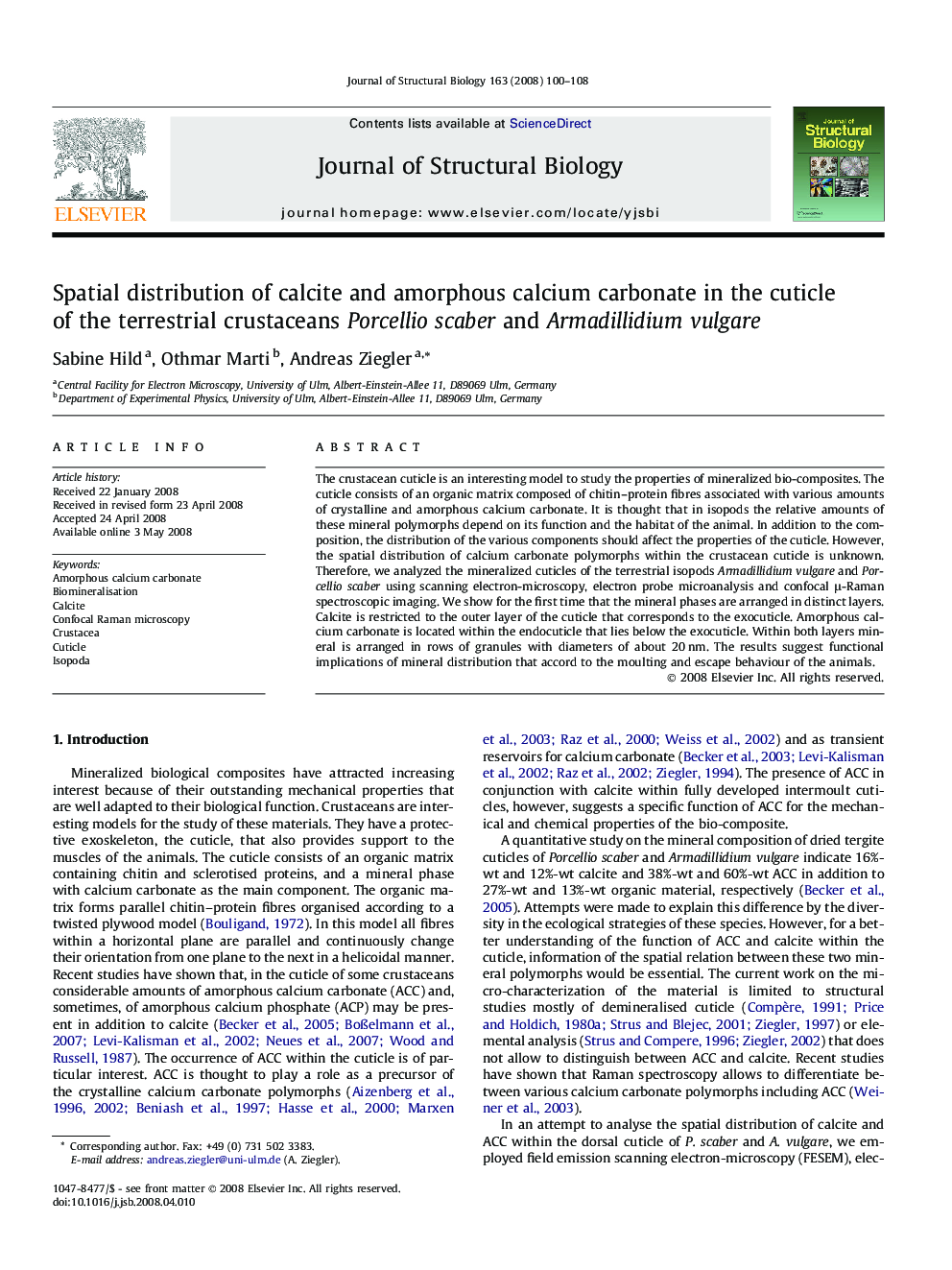| Article ID | Journal | Published Year | Pages | File Type |
|---|---|---|---|---|
| 5915204 | Journal of Structural Biology | 2008 | 9 Pages |
Abstract
The crustacean cuticle is an interesting model to study the properties of mineralized bio-composites. The cuticle consists of an organic matrix composed of chitin-protein fibres associated with various amounts of crystalline and amorphous calcium carbonate. It is thought that in isopods the relative amounts of these mineral polymorphs depend on its function and the habitat of the animal. In addition to the composition, the distribution of the various components should affect the properties of the cuticle. However, the spatial distribution of calcium carbonate polymorphs within the crustacean cuticle is unknown. Therefore, we analyzed the mineralized cuticles of the terrestrial isopods Armadillidium vulgare and Porcellio scaber using scanning electron-microscopy, electron probe microanalysis and confocal μ-Raman spectroscopic imaging. We show for the first time that the mineral phases are arranged in distinct layers. Calcite is restricted to the outer layer of the cuticle that corresponds to the exocuticle. Amorphous calcium carbonate is located within the endocuticle that lies below the exocuticle. Within both layers mineral is arranged in rows of granules with diameters of about 20 nm. The results suggest functional implications of mineral distribution that accord to the moulting and escape behaviour of the animals.
Keywords
Related Topics
Life Sciences
Biochemistry, Genetics and Molecular Biology
Molecular Biology
Authors
Sabine Hild, Othmar Marti, Andreas Ziegler,
